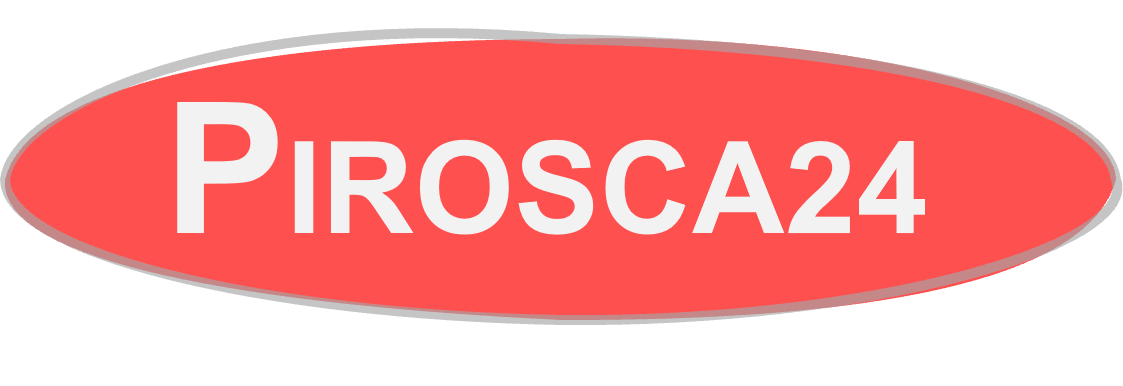Introduction to citation methods and their importance in scientific papers
Citation is the practice of acknowledging the sources of information used in academic work. This includes naming the authors and their works, as well as providing relevant details such as title, publication date and page numbers[1]. The importance of citation lies in its ability to appreciate the original authors and provide evidence for the claims made in the paper. Citing the source makes scientific papers more credible and trustworthy, and readers can verify the information presented[2].
In scientific papers, citation is of paramount importance. It helps to avoid plagiarism and ensures that the work is original and based on credible sources. Scientific papers include statements from other publications by means of direct and indirect quotations, which are to be marked as citations[3]. Proper citation also helps to distinguish between the author’s own ideas and those of others, which is essential in scholarly writing[4]. By citing sources, scholarly papers can also contribute to ongoing discourse and knowledge development in a particular area[1].
Various citation styles are used in academic writing, including APA, AMA, Harvard, MLA, and the German citation style[5]. Each citation style has its own set of rules and guidelines for formatting and referencing sources[1]. For example, the APA citation style requires the author’s last name and year of publication to be included in the in-text citation, while the Harvard citation style requires the author’s last name and page number[6]. It is important to choose the appropriate citation style for each subject area and to adhere to its guidelines[7]. This ensures that the paper is not only accurate and credible, but also in line with the established conventions of the field[8]. To facilitate the process of citation, various citation programs are available, such as Citavi, EndNote, Zotero, and others[9]. In conclusion, citation is an essential part of scientific papers. It gives credibility and originality to the work, helping to distinguish between the author’s own ideas and those of others. There are several citation styles to choose from, and it’s important to choose the appropriate style for each subject area. By citing the source correctly, scientific work can contribute to the further development of knowledge in a particular field.
APA Citation Method and its Application in Scientific Papers
The American Psychological Association (APA) citation style is one of the most commonly used citation styles in academic papers[10]. It provides guidelines for formatting and referencing sources in academic writing. The APA citation style is widely used in the social sciences and is also used in other fields. The style is designed to ensure that sources are cited correctly and consistently, providing readers with the information they need to locate the original source[8].
APA-style in-text citations require the author’s surname and the year of publication of the source. If you are quoting directly from a source, you must also include the page number(s) of the citation[1][11]. For example, an in-text citation for a direct citation would look like this: (Smith, 2010, p. 25). If you are paraphrasing or summarizing information from a source, all you need to do in the citation is include the author’s last name and the year of publication[12].
The APA-style “References” section is a list of all the sources you have cited in your paper[1]. It should be formatted alphabetically according to the author’s last name and contain all the necessary information so that the reader can find the original source. The information required for each source varies depending on the type of source, but generally includes the author’s name, publication date, source title, and publication information[10][13]. It is important to ensure that all sources in the “References” section are cited correctly and consistently, as this will allow readers to verify the information contained in your paper[3].
MLA Method and its Application in Scientific Papers
The MLA citation style is widely used in academic papers and is internationally recognized[14]. It provides a clear and consistent method for citing sources in scientific texts, ensuring that all references are accurately documented and easily traceable[15]. In the MLA citation style, in-text citations are used to credit sources within the body of the paper, while the “Works cited” section provides a comprehensive list of all sources used in the paper[16]. This style is particularly suitable for English-language academic papers, including bachelor’s and master’s theses[17].
MLA-style in-text citations typically consist of the author’s name and the page number(s) from which the information originated[16]. These quotes can be placed in parentheses or integrated into the sentence itself[18]. For example, a parenthetical quote might look like this: (Smith 23), while an inserted quote might look like this: According to Smith, “.” (23). It is important to ensure that citations in the text are accurate and complete, as they provide readers with the necessary information to find the source in the section with the works cited[19].
The MLA-style cited works section provides a comprehensive list of all sources used in the paper[16]. This section should be arranged alphabetically by the author’s last name and include all relevant publication information such as title, publisher, and publication date[17]. It is crucial to ensure that all sources are properly formatted and that the information provided is accurate and complete[3]. By adhering to the guidelines for in-text citations and the section on cited works, authors can ensure that their academic papers meet the high standards of academic integrity and accuracy.
ChicagoCitation method and its application in scientific papers
The Chicago citation style is a commonly used citation method in academic writing. It includes both a footnote or endnote system and a name-date system, making it a versatile option for researchers in various fields[20]. The footnote or endnote system cites sources with short references or footnotes, while the name-date system inserts the author’s name and publication date into the text. In scholarly papers, the footnote or endnote system is often preferred, as it allows for more detailed referencing and avoids interrupting the flow of text[21].
In-text citations are a crucial part of any scholarly paper, and Chicago’s citation style provides clear guidelines for their use[1]. Quotations and paraphrases are marked with a superscript number corresponding to a footnote or endnote containing the full citation information[22]. The Chicago style also requires the inclusion of a bibliography section listing all the sources cited in the work in alphabetical order[23]. The “Bibliography” section should follow certain formatting guidelines, including the use of hanging indents and uniform punctuation[24].
When using the Chicago citation style in scholarly papers, authors have the option of inserting references either in footnotes or in endnotes[25]. Footnotes are usually placed at the bottom of the page, while endnotes are listed at the end of the paper. Regardless of the method chosen, it is important to ensure that all sources are cited correctly and consistently throughout the document[25]. Accurate and thorough citation not only demonstrates academic integrity, but also allows readers to find and verify the sources used in research[26].
Selection of the appropriate citation style for scientific papers
When writing an academic paper, choosing the appropriate citation style is crucial. There are several factors to consider when choosing a citation style, including[5]: – The topic of the thesis – The target audience – The specific requirements of the journal or publication Different citation styles have different rules and formats. Therefore, it is important to choose a style that fits the topic of the essay and the target audience. For example, in the social sciences, the citation style of the American Psychological Association (APA) is often used, while in engineering and computer science, the citation style of the Institute of Electrical and Electronics Engineers (IEEE) is used.
The type of sources used in a scientific paper also plays an important role in determining the appropriate citation style[3]. For example, the Modern Language Association (MLA) citation style is widely used for literary works, while the Vancouver citation style is used in medical research. It is important to choose a citation style that is compatible with the sources used in the paper to ensure accurate and consistent referencing.
In addition to the above factors, it is also important to consider the guidelines of the journal or publication in which the paper is submitted[27]. Many journals have their own citation rules, which may differ from the commonly used citation styles. It is important to carefully review the guidelines and ensure that the chosen citation style is compatible with the requirements of the journal. Some journals may also provide specific instructions on how to format citations, such as how to use italics or quotation marks. Overall, choosing the appropriate citation style is crucial to ensure the accuracy and consistency of referencing in academic papers. Familiarizing yourself with commonly used citation styles and reviewing the guidelines of the intended journal or publication can help ensure that the chosen citation style is appropriate for the paper. By following the rules and formats of the chosen citation style, researchers can maintain their academic integrity and contribute to the advancement of scientific knowledge[8].
Common Citation Mistakes and How to Avoid Them
A common citation mistake is incorrectly formatted citations[1]. Different citation styles have specific guidelines for formatting in-text citations, reference lists, and bibliographies. Failure to follow these guidelines may result in loss of grade and confusion among readers. To avoid this mistake, it is important to familiarize yourself with the specific citation style required for your academic paper. Resources such as citation guides and online citation tools can be helpful in ensuring that citations are formatted correctly[28].
Another mistake to avoid is missing or incomplete citation information[1]. In academic papers, it is important to provide enough information about the source so that the reader can find it on their own. This includes the author’s name, the title of the work, the date of publication, and the relevant page numbers. Failure to provide this information can lead to accusations of plagiarism and a loss of credibility for the author. To avoid this mistake, it is important to take careful notes during the research and double-check all citation information before submitting the thesis.
Perhaps the most serious mistake in citation is plagiarism[29]. Plagiarism refers to the use of third-party sources in scientific papers without proper citation[30]. This can take many forms, including copying and pasting entire passages from sources, paraphrasing without proper citation, and submitting work that was not written by the author. Plagiarism can have serious consequences, including failing the term paper, failing the course, or even expulsion from college. To avoid plagiarism, it is important to always cite sources correctly, take careful notes when researching, and seek help from professors or tutors when needed.
In conclusion, citation methods play a crucial role in scientific papers, as they provide credibility and value the sources used. The three most commonly used citation styles are APA, MLA, and Chicago, each with its own set of rules and guidelines. When choosing a citation style, it’s important to consider factors such as the type of sources used and compatibility with the journal or publication guidelines. In addition, it is important to avoid common mistakes such as misformatted citations, missing or incomplete citation information, and plagiarism. By following the correct citation style and avoiding common mistakes, authors can ensure the accuracy and reliability of their academic papers.
Quellen:
1.Richtig zitieren – Übersicht & Beispiele der Zitierweisen – Scribbr. (n.d.) Retrieved November 30, 2023, from www.scribbr.de/category/richtig-zitieren/
2. Richtig Zitieren | Alle Zitierarten mit Beispielen. (n.d.) Retrieved November 30, 2023, from www.bachelorprint.de/richtig-zitieren/
3. Richtig zitieren: Die Zitierregeln für wissenschaftliche …. (n.d.) Retrieved November 30, 2023, from www.academics.de
4. Wissenschaftlich Zitieren – so geht es richtig. (n.d.) Retrieved November 30, 2023, from www.ist-hochschule.de
5. Zitierweisen | Alle Zitierstile im Überblick – Scribbr. (n.d.) Retrieved November 30, 2023, from www.scribbr.de/richtig-zitieren/uebersicht-zitierstile/
6. Zitieren wissenschaftliche Arbeit – APA, Fußnoten | Studium. (n.d.) Retrieved November 30, 2023, from www.1a-studi.de/wissenschaftliche-arbeit/zitieren
7. Zitieren in wissenschaftlichen Arbeiten: Warum und wie? – …. (n.d.) Retrieved November 30, 2023, from www.tub.tuhh.de
8. Alle Zitierstile auf einen Blick. (n.d.) Retrieved November 30, 2023, from www.bachelorprint.de
9. Übersicht Zitierweise – (fast) alle Zitierstile mit Beispielen. (n.d.) Retrieved November 30, 2023, from www.acad-write.com
10. MIT APA-STIL ZITIEREN – APA-Style + Standard Zitierweise. (n.d.) Retrieved November 30, 2023, from www.mentorium.de
11. Verweis im Text gemäß APA ~ Die Regeln im Überblick. (n.d.) Retrieved November 30, 2023, from www.bachelorprint.de/apa-zitieren/verweis-im-text-apa/
12. IM TEXT NACH APA ZITIEREN | Standard & Beispiele. (n.d.) Retrieved November 30, 2023, from www.lektorat-korrektur.de/apa-stil-im-text/
13. Verweise im Text laut APA-Richtlinien – Scribbr. (n.d.) Retrieved November 30, 2023, from www.scribbr.de
14. MLA-Zitation ~ Alle wichtigen Regeln im Überblick. (n.d.) Retrieved November 30, 2023, from www.bachelorprint.de
15. Richtig Zitieren – Alle Zitierregeln mit Beispielen. (n.d.) Retrieved November 30, 2023, from www.mentorium.de
16. Nach MLA zitieren – Richtlinien zur korrekten Zitierweise. (n.d.) Retrieved November 30, 2023, from www.scribbr.de/richtig-zitieren/mla-zitieren/
17. MLA-STIL ZITIEREN | Zitierweise, Regeln & Beispiele. (n.d.) Retrieved November 30, 2023, from www.lektorat-korrektur.de/zitieren-im-mla-stil/
18. MLA-STIL IM TEXT – Regeln & Beispiele zum Zitieren nach MLA. (n.d.) Retrieved November 30, 2023, from www.lektorat-bachelorarbeit.de/mla-stil-text/
19. Wie zitiert man im MLA-Stil im Text der Bachelorarbeit oder …. (n.d.) Retrieved November 30, 2023, from www.mentorium.de/mla-stil-im-text/
20. Chicago-Zitierweise – Scribbr. (n.d.) Retrieved November 30, 2023, from www.scribbr.de/category/chicago-zitierweise/
21. Die Chicago Zitierweise richtig verwenden | Beispiele & …. (n.d.) Retrieved November 30, 2023, from gwriters.de/zitationsgenerator/chicago-zitierweise
22. Chicago | Zitieren im Text (Fuß- oder Endnotensystem) – Scribbr. (n.d.) Retrieved November 30, 2023, from www.scribbr.de
23. Zitate im Chicagoer Stil leicht gemacht: Formatierung und …. (n.d.) Retrieved November 30, 2023, from mindthegraph.com/blog/de/chicago-style-zitat/
24. MIT CHICAGO-STIL ZITIEREN | die Chicago Zitierweise. (n.d.) Retrieved November 30, 2023, from www.mentorium.de/zitieren-im-chicago-stil/
25. Zitierstile (4): Der Chicago-Stil. (n.d.) Retrieved November 30, 2023, from www.contexta.de/chicago-stil/
26. Zitieren im Chicago-Stil – Lektorat Bachelorarbeit. (n.d.) Retrieved November 30, 2023, from www.lektorat-bachelorarbeit.de/zitieren-im-chicago-stil/
27. Schreibtipps für wissenschaftliche Arbeiten Bachelorarbeit …. (n.d.) Retrieved November 30, 2023, from adagmedia.ch
28. Plagiate ~ Definition, Konsequenzen, Vermeidung. (n.d.) Retrieved November 30, 2023, from www.bachelorprint.de/plagiate/
29. Wissenschaftliches Arbeiten (Teil 4): Das Plagiat. (n.d.) Retrieved November 30, 2023, from www.munich-business-school.de30. Das ist Plagiat + 5 einfache Beispiele – Scribbr. (n.d.) Retrieved November 30, 2023, from www.scribbr.de/category/plagiat/


